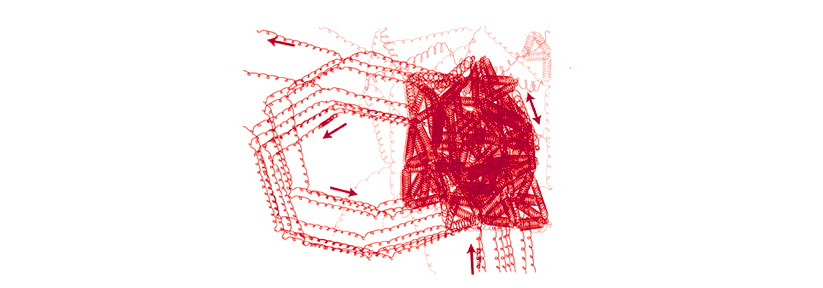For Nietzche, "pain is the most powerful aid to mnemonics." "Man could never do without blood, torture, and sacrifices when he felt the need to create a memory for himself." "If something is to stay in the memory, it must be burned in: only that which never ceases to hurt stays in the memory." (Genealogy of Morals, Ecce Homo)
On the other hand, ritual may be seen as a way to keep memory alive without the experience of pain. Bataille echoes Nietzche's description of the role of religious sacrifice. He describes sacredness as the revelation of continuity through the death of a discontinuous being to those who watch it as a solemn rite. (p.22)
"Those who do not feel pain seldom think that it is felt." Samuel Johnson. "To have pain is to have certainty , to hear about pain is to have doubt." (Elaine Scarry, The Body in Pain, p. 13)
Like consciousness, pain as a philosophical issue raises the questions of subjectivity and of other minds. Wittgenstein rejected the classical status of pain as the paradigm of direct intuition. When one is in pain, he said in the Philosophical Investigations, one cannot say, except perhaps as a joke, that one knows one is in pain. Say that one cannot doubt it and leave it at that, he suggested.
Read MoreThe eminent Philadelphia physician Silas Weir Mitchell first coined the phrase "phantom limb" after the Civil War. In those preantibiotic days, gangrene was a common result of injuries, and surgeons sawed infected limbs off thousands of wounded soldiers. After amputation of movable, functional extremities, the phantom limb seems to be experienced in close to 100 per cent of cases. Oliver Sachs describes them as "fossil images" but explains them as the persistence of pathological excitation to the peripheral nerves, especially if there is formation of a neuroma in the stump. (see A Leg to Stand On, p.194,n.) (V. S. Ramachandran has convincingly shown that the locus of the phantom limb is in the brain, not near the hand or leg.
Read MoreThe proprioceptive sense informs us about the position of our own limbs in relation to one another and to the space around us. Its sensations come from the muscles and tendons and are not localized. The proprioceptive and tactile sensations combine to constitute the haptic. Proprioceptive feedback is an important developmental component in the sense of agency.
Read MoreFor Gerald Edelman, reentry is the unique feature of higher brains. It is an ongoing recursive, and massively parallel process of signalling back and forth along reciprocal connections in the brain which integrates the various functionally segregated properties of brain areas despite the lack of a central coordinative area. One striking consequence of reentry is the widespread synchronization of activity of different groups of active neurons. Edelman compares the interconnections of functional clusters in the brain to a network of coupled springs, which propagate any perturbation throughout the system. This is the essential contemporary image: the rhizome, the network -- Empire.
Read MoreFor Freud, "...the essence of repression lies simply in the turning something away, and keeping it at a distance, from the conscious." (Sigmund Freud, "Repression" 1915) Freud's early writings described repression as the intentional rejection of distressing thoughts and memories from consious awareness. But his idea changed gradually over time, and Freud began to use the term repression in a much more general sense, to refer to a variety of defense mechanisms that operate outside a person's awareness and automatically exclude threatening material from consciousness. While repression is often equated with defense, repression is more a mode or moment in defense. ( Abwehr ) When Freud referred to repression as "the foundation stone on which the whole structure of psychoanalysis rests," he was referring to a multiplicity of specific techniques, of mechanisms that include Denial, Repression, Reaction Formation, Rationalization, Humor, and Projection. In Inhibitions, Symptoms, and Anxiety (1926) Freud sought to clarify the confusion between the narrow meanings of repression and the broader concept of defense.
Read MoreAny theory of vision must describe some relation between the eye and the brain. Humberto Maturana studied the visual cortex of the frog and summarized his research in an article entitled, "what the frog's eye tells the frog's brain." Maturana and his co-authors demonstrated that the frog's sensory receptors speak to the brain in a language that is highly processed and species specific. If every species constructs for itself a different world, which is the world? Thus Maturana's credo: There is no observation without an observer.(K. Hayles, "Simulated Nature and Natural Simulations," in Uncommon Ground.) Further research led Maturana to conclude that perception is not fundamentally representational, that the perceiver encounters the world through his own self-organizing processes, through autopoesis.
Read More